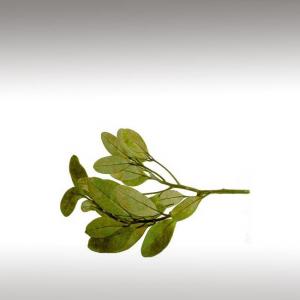
RAVENSARA ESSENTIAL OIL (RAVENSARA AROMATICA) - ESSENTIAL OILS

BASE / GENERAL DATA
Information submited: June 1, 2015 Modified: March 15, 2018 By: OperaDreamhouse
Botanical Name: Ravensara aromatica
Common Method of Extraction: Steam distillation
Part Typically Used: Leaves
Color: Pale yellow
Consistency: Thin
Perfumery Note: Medium
Strength of Initial Aroma: Clean and fresh scent, slightly spicy, camphory, woody herbaceous.
Ravintsara and Ravensara are both obtained from trees belonging in the Lauraceae family. The Lauraceae family includes Camphor (Cinnamomum Camphora "Monum"), Cinnamon (Cinnamomum Zeylanicum), bay Laurel (Laurus Nobilis), Rosewood (Aniba Rosaeodora), Ho Wood (Cinnamomum Camphora), May Chang (Litsea Cubeba), Ravensara (Ravensara Aromatica), Ravintsara (Cinnamomum Camphora).
Ravensara (Ravensara Aromatica) and Ravintsara (Cinnamomum Camphora) are two essential oilsdistilled from 2 very different trees. For many years, oils from both trees have been distilled and traded on the market as Ravensara with a reference to the botanical names Ravensara Aromatica or Cinnamonum Camphora. It is only a few years ago that research into the chemical make up of these oils has finally given them their distinctive botanical identity.
Ravensara Aromatica is a member of the Lauraceae (laurel) family, and originates in Madagascar. The name Ravensara is a latinization of the Malagasy word Ravintsara. Other Malagasy names include Havozo, Hazomanitra and Tavolomanitra. The leaves and twigs of Ravensara Aromatica have a mildly camphorous aroma similar to Eucalyptus.
This tree itself is quite aromatic and releases a fragrant aroma.
The people of Madagascar refer to Ravensara essential oil as the oil that heals. The name of the tree in Malagasy means “Aromatic Leaf”, which may be the reason why different botanical species are sometimes offered under this name.
Ravensara Aromatica originates from Australia. Two oils are produced from the tree, one from the leaves - Ravensara Aromatica - and one from the bark - Ravensara Anisata. Both oils contain a very high level of methylchavicol (estragol) (70 to 90%) a suspected carcinogen.
Common Method of Extraction: Steam distillation
Part Typically Used: Leaves
Color: Pale yellow
Consistency: Thin
Perfumery Note: Medium
Strength of Initial Aroma: Clean and fresh scent, slightly spicy, camphory, woody herbaceous.
Ravintsara and Ravensara are both obtained from trees belonging in the Lauraceae family. The Lauraceae family includes Camphor (Cinnamomum Camphora "Monum"), Cinnamon (Cinnamomum Zeylanicum), bay Laurel (Laurus Nobilis), Rosewood (Aniba Rosaeodora), Ho Wood (Cinnamomum Camphora), May Chang (Litsea Cubeba), Ravensara (Ravensara Aromatica), Ravintsara (Cinnamomum Camphora).
Ravensara (Ravensara Aromatica) and Ravintsara (Cinnamomum Camphora) are two essential oilsdistilled from 2 very different trees. For many years, oils from both trees have been distilled and traded on the market as Ravensara with a reference to the botanical names Ravensara Aromatica or Cinnamonum Camphora. It is only a few years ago that research into the chemical make up of these oils has finally given them their distinctive botanical identity.
Ravensara Aromatica is a member of the Lauraceae (laurel) family, and originates in Madagascar. The name Ravensara is a latinization of the Malagasy word Ravintsara. Other Malagasy names include Havozo, Hazomanitra and Tavolomanitra. The leaves and twigs of Ravensara Aromatica have a mildly camphorous aroma similar to Eucalyptus.
This tree itself is quite aromatic and releases a fragrant aroma.
The people of Madagascar refer to Ravensara essential oil as the oil that heals. The name of the tree in Malagasy means “Aromatic Leaf”, which may be the reason why different botanical species are sometimes offered under this name.
Ravensara Aromatica originates from Australia. Two oils are produced from the tree, one from the leaves - Ravensara Aromatica - and one from the bark - Ravensara Anisata. Both oils contain a very high level of methylchavicol (estragol) (70 to 90%) a suspected carcinogen.

SPIRITUAL PRACTISES DATA

MEDICINE / HEALTH DATA

BEAUTY / COSMETICS DATA

FOOD / COOKING DATA
COMMENTS
No comments.


